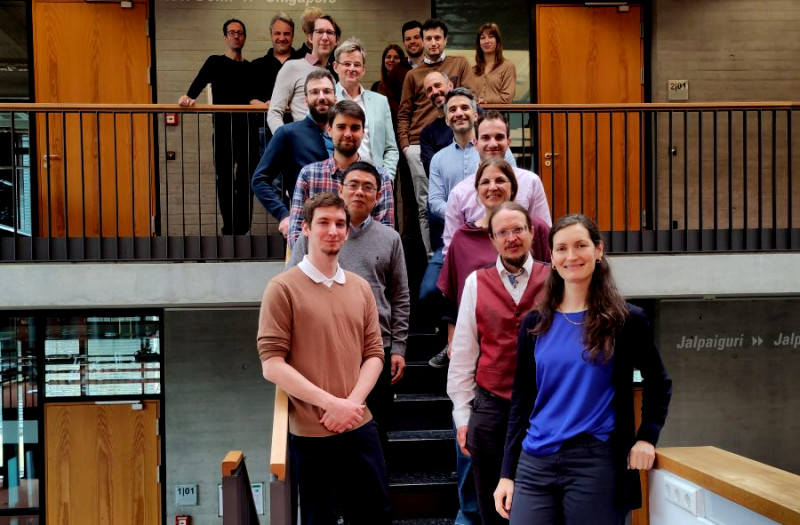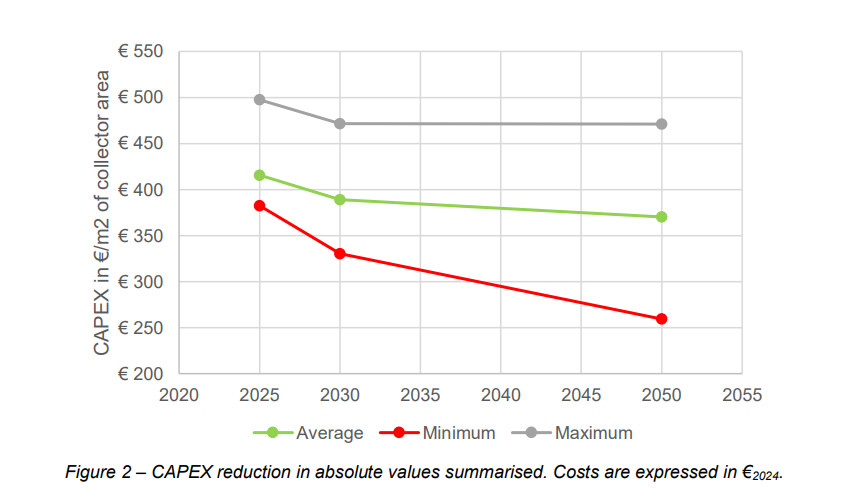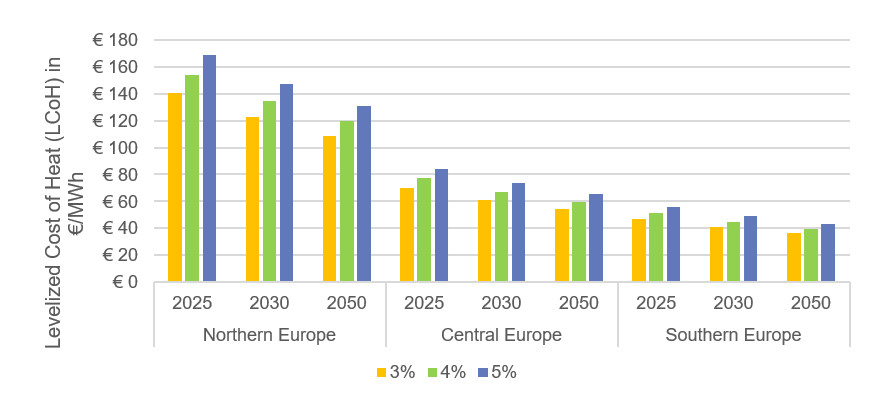Posted: October 5, 2025

Photo: Solites
IEA SHC Task 68 on efficient solar district heating systems is coming to an end. Over the past three years, the task has made strong progress. It helped introduce the technology to project developers and utilities. This work resulted in a series of comprehensive reports. Luuk Beurskens from TNO, the Netherlands Organisation for Applied Scientific Research, was one of the leading experts in Task 68. He authored three key reports together with multiple partners. These cover the potential for future cost reductions, planning check lists, and an overview of incentive programmes. The photo shows the Task 68 team at the final project meeting in February 2025 in southern Germany
Solites has been monitoring the development of the German solar district heating market for many years. As of March 2025, 61 plants with a combined capacity of 121 MW were in operation, with only 7 MW added in 2024. According to Solites, this capacity is expected to double by the end of 2026. Contracts have already been awarded for 16 new plants totaling 135 MW, some of which are currently under construction.
However, this market growth is still insufficient. In an April 2025 press release, Solites emphasized that an average of 350 MW must be commissioned each year to meet the targets outlined in the 2024 District Heating Prospects (Perspektive der Fernwärme) study by German Prognos AG. Accelerating project planning and approval processes is therefore urgent.
High standards in the design, planning, construction, and operation of solar thermal plants are essential for developing cost-efficient systems, maximizing energy output, and enabling faster deployment. To support this, one of the reports of Task 68 offers comprehensive check lists for each stage of implementing a solar district heating (SDH) plant. It highlights key considerations and questions critical to successful project development. The report is available for download here.
Highest cost reduction potential in construction phase
“We know that the high-CAPEX-low-OPEX is one of the key barriers of SDH deployment”, said Beurskens. “A dilemma also known for other renewable energy technologies”. The Task 68 team has therefore thoroughly analysed future cost-saving potential for SDH and the results have been published in a separate report. It is titled Solar District Heating: Measures to Reduce Costs and is available for download here.
The starting point was a 7 MW solar district heating field of flat-plate collectors produced in Europe which cover 20 % of the heat demand in a heat network. For the reference year 2025, capital expenditures (CAPEX) and operating expenses (OPEX) over the entire project lifetime were estimated in a survey. Total life time costs ranged between 380 to 500 EUR/m2, with an average value of 416 EUR/m2. This value represents the full collector field costs (CAPEX and OPEX) excluding costs of storage, land lease and subsidies.
Task participants were then asked to score 46 cost reduction mechanisms which have been listed in the annex of the related report. Most cost reduction has been expected in the construction phase: prefabrication reduces labour and construction time. Additionally, standardisation, smart purchasing and streamlining of processes may contribute significantly. Based on the survey figure 1 shows the cost reduction potential for the collector field to 389 EUR/m2 in 2030 (-6.5 %) and to 370 EUR/m2 (-10.9 %) in 2050. Beurskens emphasised that it is important that cost reduction through increased deployment and research efforts play together.

Figure 1: CAPEX reduction of a 7 MW flat plate collector field in Europe in absolute values until 2050
Source: IEA SHC Task 68
In addition to the cost reductions for the solar field, the survey also revealed a reduction in OPEX costs from 4.19 EUR/m2/a to 3.87 EUR/m2*a in 2030 and 3.8 EUR/m2/year in 2050. According to the filled in questionnaires some of the cost reduction measures also affected the yield positively. Here an increase was assumed with 7 % in 2030 and 15 % in 2050.
Based on all these assumptions, Beurskens calculated Levelised Cost of Heat for three locations in Europe (see figure 2). “Our assessment results in competitive heat costs for sites in Central and Southern Europe”, concluded Beurskens. For a solar plant, for example, at a Southern European location, the current baseline for the LCOH is 56 EUR/MWh. In 2030 and 2050, this price is estimated to drop to 48 EUR/MWh and 46 EUR/MWh, respectively, considering a 4 % discount rate and an assumed lifetime of 25 years.
For the central European locations, the LCOH has a baseline between 70 EUR/MWh and 84 EUR/MWh, depending on the given discount rate and the assumed lifetime. In 2030 and 2050, the LCOH using a 4% discount rate is estimated to drop to 67 and 60 EUR/MWh, respectively.

Figure 2: Levelised cost of heat for three different locations, discount rates and time horizons
Source: Task 68
Direct, integrating and enabling policy: how to accelerate solar district heating in Europe
Beurskens’ third report on the topic Policies and Business Models for Solar Thermal District Heating Systems was produced with extensive input from experts from Austria, Germany, Spain, Switzerland and Denmark. Together with the Netherlands, policy examples and policy frameworks for solar district heating were considered in these six countries. For the fast readers, a two page conclusion lists the key characteristics from the following national grant policies (pages 38/39) in this report:
- Dutch Sustainable Energy Production and Climate Transition Incentive Scheme (SDE++)
- Large-scale solar systems funding of the Austrian Climate and Energy Fund
- Germany: Federal funding for efficient heating networks (Bundesförderung für effiziente Wärmenetze)
- Spain: Investment grants within TED/707/2022 and TED/641/2023 (RENOCOGEN)
- Switzerland: Federal Act on Climate Protection Objectives, Innovation, and the Strengthening of Energy Security.
In his introduction, Beurskens also emphasized the fact that besides direct investment policies solar district heating may benefit significantly from both integrating and enabling policies and the combination of both. Integrating policies support the use of storage for sector coupling or ensure the necessary infrastructure is in place. For enabling policy the report presents an even longer list of possible measures. These include setting targets, land-use policies, urban planning or certification and quality standards. This report is available for download here.
Website of organisations mentioned in this news article: